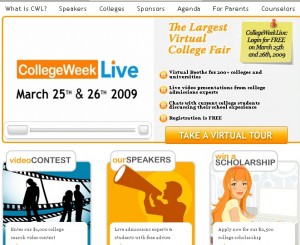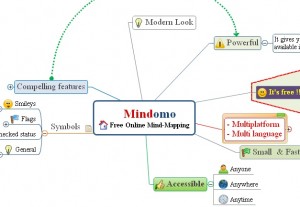College Admissions
College Admissions
Preparing for College
The Best College for You
What to Study
Applications
Education Options
Education Options
Private Universities
Public & State Universities
Community Colleges
Scholarships
Scholarships
African American Scholarships
Latino Scholarships
Native American Scholarships
Women Scholarships
College Grants
College Grants
Federal Grants
Merit Based Grants
Need Based Grants
Student Loans
Student Loans
Federal Student Loans
State Student Loans
No Co-signer Student Loans
Bad Credit Loans
Student Loan Consolidation
College Survival
College Survival
Financial Aid Tips
The Digital Student Blog
Earlier this year we offered our recommendations for a green new year. More and more, students across America are beginning to realize that if we want to preserve this wondrous world we have been given we must commit ourselves to a greener lifestyle.
The Sustainable Classrooms Contract
A great example for all of us to emulate comes from the students and staff of St. Michael’s College in Colchester, Vermont. In an effort to get professors and students to practice sustainable living habits within the academic environment, Green Up SMC and the Environmental Council, along with a new Office of the Sustainability, are working on instituting “The Sustainable Classrooms Contract.”
The goal is to make sustainable living practices a fundamental habit. By making them a part of the higher education learning process, the organizations believe these habits will carry over into students’ and professors’ daily lives.
The contract is broken into two fundamental areas.
Primary Initiatives
 Offering a very short list of primary initiatives, these are easy to remember and implement.
Offering a very short list of primary initiatives, these are easy to remember and implement.
Secondary Initiatives
The secondary initiatives represent some large and small scale items:
Suggested Practice
While we would move the second secondary initiative to the top list in a heartbeat, we also like the overall philosophy of the sustainability contract. The folks at St. Michael’s note that all sustainability initiatives are suggestions and that each class can modify the contract to best fit their needs while still staying true to the purpose of this initiative. In simplest terms, the contract may be modified by professors and students alike.
 Yet another aspect that deserves mention is the recommendation that each student and professor sign on to the Sustainable Classrooms Contract for each and every class. But the sign on process may be initiated by a professor or by the students.
Yet another aspect that deserves mention is the recommendation that each student and professor sign on to the Sustainable Classrooms Contract for each and every class. But the sign on process may be initiated by a professor or by the students.
And finally, most importantly, as it is a contract, both parties are expected to live up to the document. Therefore, each has the responsibility to self-enforce the agreement.
Replicate the Idea
This simple idea represents a critical step in moving towards a more sustainable culture. It makes everyone aware of the need to change certain behaviors and begins the process, one small step at a time, towards preserving this wondrous planet.
Flickr photos courtesy of Tobo and Woodley Wonder Works
High school students looking to learn more about the college application, admissions and choice process have a great upcoming opportunity next month.
CollegeWeekLive, the world’s biggest virtual college fair, has been set for March 25th and 26th. Featuring more than 250 colleges and universities from around the world, the annual event is expected to see as many as 28,000 attendees.
What makes CollegeWeekLive so unique is that it offers all of the standard college fair information that students seek when attending such an event but does so in an online format. Therefore, from one’s home or school computer, a prospective college student has access to a wealth of information in a cost-effective and convenient manner.
 The bi-annual event (held each November and March) offers students access to some of the top experts in the field. Virtual fair attendees can watch admissions experts speak on SAT preparation, the application essay process and or how to pay for college. Attendees will also be able to ask various questions via live chats.
The bi-annual event (held each November and March) offers students access to some of the top experts in the field. Virtual fair attendees can watch admissions experts speak on SAT preparation, the application essay process and or how to pay for college. Attendees will also be able to ask various questions via live chats.
The event will also feature virtual booths for the various colleges taking part in the fair. These booths will offer student attendees electronic brochures, videos, webinars, and podcasts related to the school. In addition, students will have the opportunity to real-time Instant Message and/or video chat with admissions counselors and students from those institutions.
As for the specific, potentially-valuable presentations for students March 25th offers:
 On the second day, March 26th, scheduled topics and presenters include:
On the second day, March 26th, scheduled topics and presenters include:
More details on the proposed agenda as well as relevant links to some of the presenters are available on the CollegeWeekLive agenda page.
Though the program should be extremely worthwhile, as an added incentive to folks, College WeekLive will be giving away a brand new 13-inch aluminum MacBook to one lucky attendee of the fair! . There is a video contest and the chance to win a $2,500 scholarship to the college of your choice.
And if you attended the November CollegeWeekLive and are still a current high school student, you can also complete a survey that will make you eligible to win an iPod Touch or a $300 donation to the charity of your choice. High school seniors will find the link to their survey here while underclassmen will find a separate survey at this location.
We recently published a guide to personal finance for students.
We would love to hear your feedback about it, and if you think your readers would appreciate it, please help spread the word. 🙂
In our prior post, we took students on a walk through some key components of personal finance. Our focus was on “good” debt (loans for college) versus “bad” debt (credit card debt) and what loans to consider, all with the idea of minimizing the debt students accrue while in college.
 Today we spend some time with Kai Davis, a senior at the University of Oregon, who will graduate this spring with zero debt. Majoring in Economics and minoring in Business Administration, the Eugene, Oregon native offers readers some great insight into how to manage one’s personal finances.
Today we spend some time with Kai Davis, a senior at the University of Oregon, who will graduate this spring with zero debt. Majoring in Economics and minoring in Business Administration, the Eugene, Oregon native offers readers some great insight into how to manage one’s personal finances.
To provide students a thorough look at how Kai has managed to earn a degree debt-free, we present our discussion with him in question and answer format.
As a freshman, did you make it a goal to graduate with zero debt?
No, it wasn’t ever a plan, but I was able to achieve it. I’ve always felt that having a smaller goal like minimizing my debt would be better than a hard and fast rule of no debt. I’ve found that I’ve made the biggest impact on my savings when I’ve adopted a few small rules. I only carry a credit card with me to earn rewards points and fill up my gas tank (I earn 5% back when I use my Chase Visa at a BP gas station). Instead I carry a small amount of cash with me. When I have the impulse to make a larger purchase I wait a few days, assess the need, check my budget, and see if I can afford it. I always want to make my purchase fully aware of costs beyond the price tag.
 I think that understanding how to manage your money intelligently and aggressively is the most important skill that students can leave college with. A degree shows that you have the drive, intelligence, and ambition to complete 4 years of course work. It doesn’t give you a job in that field or even the desire for a job in that field. But understanding how to manage your finances is a skill that stays with you for life.
I think that understanding how to manage your money intelligently and aggressively is the most important skill that students can leave college with. A degree shows that you have the drive, intelligence, and ambition to complete 4 years of course work. It doesn’t give you a job in that field or even the desire for a job in that field. But understanding how to manage your finances is a skill that stays with you for life.
So, graduating without debt isn’t the skill to focus on. Graduating with the ability to understand personal finance is.
Everyone talks about the rising costs of college and how students today have to borrow money to be able to pay for school. How have you been able to graduate with no personal debt?
I was already planning on attending the University of Oregon due to its strong business program. I was able to save quite a bit of money by living at home for the first 3 years of college. I’ve worked 20-30 hours each week throughout college, either at work-study jobs or on start-ups with friends. I’ve found that spending a lot of time working during college doesn’t have to come at the cost of academic success. Rather, spending a good amount of time working during college has given me the ability to triage assignments by importance and complete my academic work in the minimum amount of time.
So your choice of school was critical to your current situation?
No, not at all. I’m lucky that the University of Oregon offered a strong Business Administration major and is an in-state school, so tuition was cheaper, but I’m fairly sure that any industrious student can manage their finances well in college if they take the time to learn the system.
Are there any other steps you have taken to earn additional money?
I’ve always worked on campus in work-study jobs. Its great for networking, learning new skills, and earning money while in college. I’ve also taken recent aggressive steps to manage my money by taking advantage of high interest savings and checking accounts. I switched from a bank paying me 1/10th of a percent interest annually to a bank paying 3.8% annually. If you’re committed to saving, the money quickly ads up.
Can you talk a little bit about credit cards and how you have managed to remain on top of credit card debt?
 As a college student you’re existing on a small budget and lines of credit from the school and banks. Let’s say you spend your budget quicker than you anticipated and are left with only your credit card for the month. Every purchase you make on the credit card ends up costing you more to pay it back. I’m not saying don’t make purchases on your credit card – I often do – but be mindful of how long it will take you to pay it back. When I hit the cap on my monthly budget, the first thing I do is assess which planned purchases I can cut back on. I’d much rather go without seeing a movie than having to pay that purchase back plus interest. While seeing a movie might be with $7 cash out of pocket, it isn’t worth $7 + compounded interest on a credit card.
As a college student you’re existing on a small budget and lines of credit from the school and banks. Let’s say you spend your budget quicker than you anticipated and are left with only your credit card for the month. Every purchase you make on the credit card ends up costing you more to pay it back. I’m not saying don’t make purchases on your credit card – I often do – but be mindful of how long it will take you to pay it back. When I hit the cap on my monthly budget, the first thing I do is assess which planned purchases I can cut back on. I’d much rather go without seeing a movie than having to pay that purchase back plus interest. While seeing a movie might be with $7 cash out of pocket, it isn’t worth $7 + compounded interest on a credit card.
So you would recommend that students set up a budget?
When I first moved out, I set a budget to plan out exactly how much I’d spend on food, utilities, gas, everything. I quickly found out that a budget often serves more as a sketch for spending than the actual spending. Some months I spend more on food than I anticipated, some months I spend much less. I use a budget to figure out how much I think I’ll be spending on average, and then use the final budget total for my monthly planning. If at the end of the month I’ve only spent 90% of my budget, I take a look at what I thought I’d be buying compared to what I did buy and see if I can trim my monthly estimate. More often than not I’ll treat myself with the unexpected windfall or deposit some money into savings. Establishing a budget so you have a general idea of what you’ll be spending in a month is much more important than nailing down the exact values you’ll be spending.
Have you made it a point to focus in on your credit rating?
 I think understanding how to use credit is as important as your degree. A horrible credit rating can harm you for a few years, but it doesn’t have to be the end of the world if you rebuild your rating. If you graduate college with bad credit, you have years to repair the credit before you start making those big purchases: a car, a house, a boat. One of my close friends graduated college without a credit rating. He was able to pay for his degree out of pocket and never bothered to open a credit card. By the time he was 26 he had a nice savings account – $50,000 or so. He decided to buy a house and let his savings appreciate there. He found a nice house at a wonderful price and went to talk to the bank about a loan and was turned down. Because he had no credit rating the bank saw him as too much of a risk and wouldn’t issue him a loan.
I think understanding how to use credit is as important as your degree. A horrible credit rating can harm you for a few years, but it doesn’t have to be the end of the world if you rebuild your rating. If you graduate college with bad credit, you have years to repair the credit before you start making those big purchases: a car, a house, a boat. One of my close friends graduated college without a credit rating. He was able to pay for his degree out of pocket and never bothered to open a credit card. By the time he was 26 he had a nice savings account – $50,000 or so. He decided to buy a house and let his savings appreciate there. He found a nice house at a wonderful price and went to talk to the bank about a loan and was turned down. Because he had no credit rating the bank saw him as too much of a risk and wouldn’t issue him a loan.
So is a credit standing as important as a degree?
Earning a degree elevates your standing in the eyes of potential employers just as a high credit rating helps you get credit to make those larger purchases. If you don’t know how to use your degree to effectively position yourself and get a job you want you won’t have as much success during your job search. Understanding how to manage a credit rating – even a bad one! – is one of the most important lessons you can learn in college.
Credit cards and student loans are not free money. Its very easy to think that you’ll just charge purchases to your credit card, make the minimum payment a few times, and be debt free in a few months, but it doesn’t work like that.
What are your thoughts about the importance of saving?
Learning to save now prevents problems later. If a student leaves college not knowing how to manage their money, how much will their lose before they learn how to save? If you leave college understanding the importance of having a check account, setting a monthly budget, eyeballing spending in certain areas relative to your income, shopping around for the highest interest rate on your accounts, and getting a credit card with rewards or cash back and paying it down quickly, you’ll be in great shape to manage your finances.
If you had the chance to offer an incoming freshman advice on personal finance, what would be the two or three things you would most emphasize with him or her?
I’d let them know that they don’t need to lose sleep over their finances. Yes, its an important thing to manage, but if you’re smart about paying your bills and keep to a schedule you’ll be fine. College is stressful enough without worrying that you won’t have enough liquidity come graduation. Take college one day at a time, try to avoid using a credit card unless it’s a purchase you know you can afford to pay off over time, and stay happy. At the end of the day, managing finances intelligently isn’t something you have to do perfectly, but just taking the time to read the fine print and understanding how to save and spend intelligently will make a large difference.
Flickr photos courtesy of Andres Rueda, TheTruthAbout and Eliane.
If you are a visual learner, then you likely have begun using the concept of mind-mapping to organize your thoughts when planning an essay or project. Because of its free-flowing nature, the mind-mapping process is spectacular for brainstorming ideas or making sense of the relationship between various components of any subject you are studying.
However, such a free-flowing process means that your hand-drawn mind map can become messy and cluttered very quickly. In the very same way that technology and word processing software has revolutionized the writing process, there are now many sites on the web that allow students to draw, manipulate and edit mind maps in a similar manner.
And because each is web-based, you can also collaborate with any classmates you choose to share the mind maps with, turning your creation into a wiki mind map if you so desire.
Bubbl.us
One simple and free web application that lets you brainstorm online is Bubbl.us. At the site you can create colorful mind maps and share those maps with your friends. In addition, you can easily use the site to create a visual that can then be embedded in a blog or website, be emailed, or saved as a standard image (and subsequently printed).
The folks at Tech Bites created a basic tutorial on Bubbl.us. If you have never used mind-mapping successfully, this tutorial also offers basic instructions as to how a mind-map comes together.
MindMeister.Com
Another option with a free section is MindMeister. However, three of the four sign up categories do have monthly costs associated with them. The free version limits users to 6 mind maps though with the free version you can collaborate on those six maps with your peers. Like Bubbl.us you can export the maps as an image or rich text file and publish your creation to a blog or website. And of course, you can always delete or download one of your maps to keep your total under the limit.
One really cool feature on MindMeister is a base timeline. When working in collaboration, it could be very helpful to scroll back to earlier aspects of a map to the time prior to a colleague making adjustments. The site has a scroll bar at the base that allows you to look back at the evolution of your creation over time, a feature that could prove extremely important when you are collaborating with other students.
Mindomo.com
Yet another option offering a free platform (subscription levels also exist) is mindomo. The site also offers a desktop downloadable version so as to be able to work offline. For those wanting to learn more about the various aspects of mindomo.com there is a visual that allows users to examine the various toolbars on the site.
Great Tool
 If you have found the concept of mind-mapping beneficial you will definitely want to check out one of these three web-based creations.
If you have found the concept of mind-mapping beneficial you will definitely want to check out one of these three web-based creations.
On the other hand, if you have not been exposed to the concept, you owe it to yourself to check one of the numerous tutorials on the web to explain how the concept works (two possible options are Tutorial A or Tutorial B). Most students indicate that once they have learned how to use the concept, the linear outlining format becomes an obsolete relic dating to the pre-PC era.